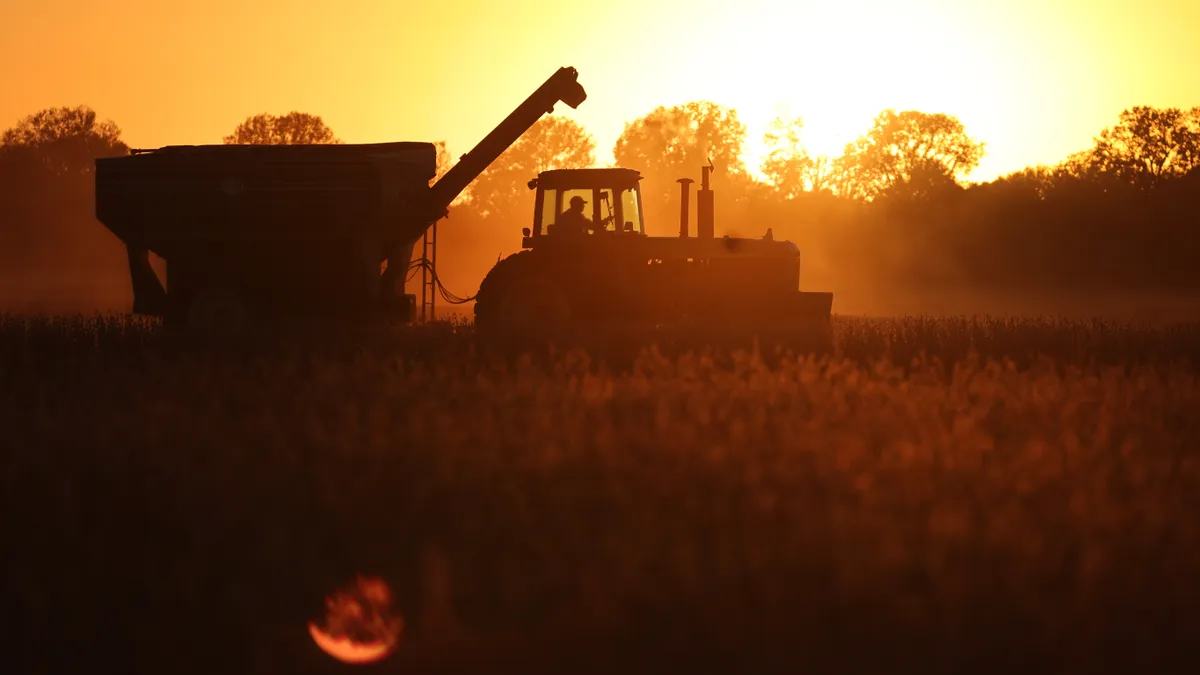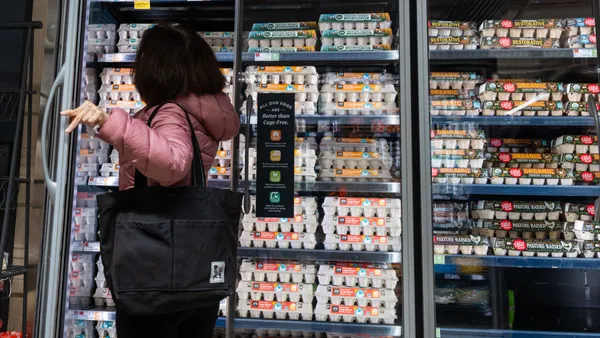Dive Brief:
- Farm income is expected to fall roughly 17% in 2023 as lower commodity prices and declining government payments weigh on the agriculture sector.
- Net farm income, a broad measure of profitability, is forecast to hit $151.1 billion, the U.S. Department of Agriculture's Economic Research Service said Thursday. That's down from a record high of $182.8 billion last year.
- Despite the drop, forecasted net farm income for 2023 is still 15% higher than the average of the last two decades, USDA Secretary Tom Vilsack said in a statement. Profits from 2021-23 are the highest in the last 50 years.
Dive Insight:
Profits peaked in 2022 when pandemic supply crunches sent food prices soaring, easily offsetting higher costs of production. Now, as commodity prices crater, the industry is struggling to keep up with still-high input costs.
“The change in net farm income this year is reflective of overall lower prices for farmers, higher production costs and higher interest rates, and declining government payments since their 2020 record levels,” Vilsack said in the statement.
Total inflation-adjusted cash receipts are forecast to fall 7.8% from 2022, while total production expenses are expected to increase by roughly 3.5%, according to USDA. Interest expenses and livestock purchases are expected to see the largest increases, with fertilizer, feed and other input costs on the decline.
Government assistance has also sharply declined with the expiration of pandemic-era aid programs. Supplemental and ad-hoc assistance payments in 2023 are expected to decrease 41.1% to $6.8 billion.
The tough market environment has pushed large agribusinesses to consolidate operations or close plants. Agricultural equipment makers are also bracing for a decline in demand as farmers put off upgrades.
The latest farm sector forecast is a revision from August, when USDA expected profitability to plummet 23%. The updated forecast, however, still expects one of the largest year-over-year declines in income on record.
Vilsack said USDA is taking market conditions into account as it works with Congress on the next Farm Bill and designs and implements programs. The agency is focusing future efforts on uplifting smaller farms, with Vilsack noting that a majority of farm households "rely on off-farm jobs to make ends meet."
"USDA will continue our efforts to bolster a complementary system that makes it possible for small- and mid-sized farms to benefit from more, new and better markets and climate smart agriculture opportunities so they can thrive," he said in a statement.











